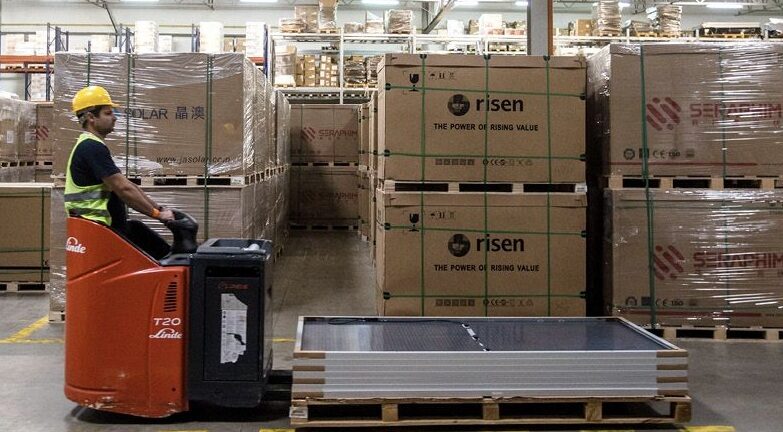A research group from India's Vellore Institute of Technology has designed an agrivoltaic system incorporating an insect net to protect crops requiring pest management such as peppers. “Agrivoltaics may not be suitable for some crops that require rigorous pest management,” the scientists said. “Normal agrivoltaic systems fail to control pests and insects, which further reduces crop output.”
The scientists conducted a techno-economic analysis of what they define as an agrivoltaic insect net house hosting pepper growth. The 1.8 kW system was built at Junagadh Agricultural University's experimental research farm in the state of Gujarat, India. As part of this setup, 12 PV panels, each with a capacity of 150 W, were installed in a chessboard pattern to minimize shading on the plants and on a three-meter structure to allow tractor movement.
“The solar azimuth and latitude angles determine the row-to-row distance of the panel, which researchers adjusted to 1.37 m for ease of panel cleaning and to maximize solar radiation. The panels are spaced 0.67 m apart to create a structure that resembles a chessboard,” the team explained. “The structural components are made using various dimensions of cold rolled coil (CRC) pipes.”
To protect the crop from pests, a forty-mesh insect net, with 40 openings per inch, was used. They used 105.80 m2 of net, which cost INR 3,174 ($37.62). CRC pipes were priced at INR 27,700, PV panels at INR 39,600, and inverter and wiring at INR 18,000. The materials used summed up to INR 88,474, or $1,048.67.
The crops are grown in a tropical dry and wet environment, with temperatures varying from 28 C and 38 C in the summer, while the average solar radiation ranges from 5 to 8 kWh/m2/day. During winter, temperatures usually range between 10 C and 25 C.”
The techno-economic analysis conducted by the academics showed that the system's electrical efficiency peaked at 14.09% in February. Its land equivalence ratio (LER) was calculated at 1.97, meaning that the setup has almost doubled a single-use crop cultivation setup. It produced 3,612 kWh of electricity, equivalent to 109.57 kWh/m2.
“The system is contributing to reducing carbon emissions and providing the farmer an additional income of 174.63 INR/m2. Farmers enjoy a net profit of 95.26 INR/m2 throughout the season,” the academics added. “The benefit-cost ratio (BCR) of the AV insect net house stands at 2.20, significantly outperforming traditional greenhouses. This is attributed to the ability of farmers to generate revenue from sustainable and clean electricity, unlike greenhouses, where income relies solely on food production.”
The system was presented in “Development of agrivoltaic insect net house to enhance sustainable energy-food production: A techno-economic assessment,” published in Results in Engineering. Scientists from India's Vellore Institute of Technology, Junagadh Agricultural University, Centurion University of Technology and Management, and Spain's Francisco de Vitoria University conducted the research.
This content is protected by copyright and may not be reused. If you want to cooperate with us and would like to reuse some of our content, please contact: editors@pv-magazine.com.



By submitting this form you agree to pv magazine using your data for the purposes of publishing your comment.
Your personal data will only be disclosed or otherwise transmitted to third parties for the purposes of spam filtering or if this is necessary for technical maintenance of the website. Any other transfer to third parties will not take place unless this is justified on the basis of applicable data protection regulations or if pv magazine is legally obliged to do so.
You may revoke this consent at any time with effect for the future, in which case your personal data will be deleted immediately. Otherwise, your data will be deleted if pv magazine has processed your request or the purpose of data storage is fulfilled.
Further information on data privacy can be found in our Data Protection Policy.